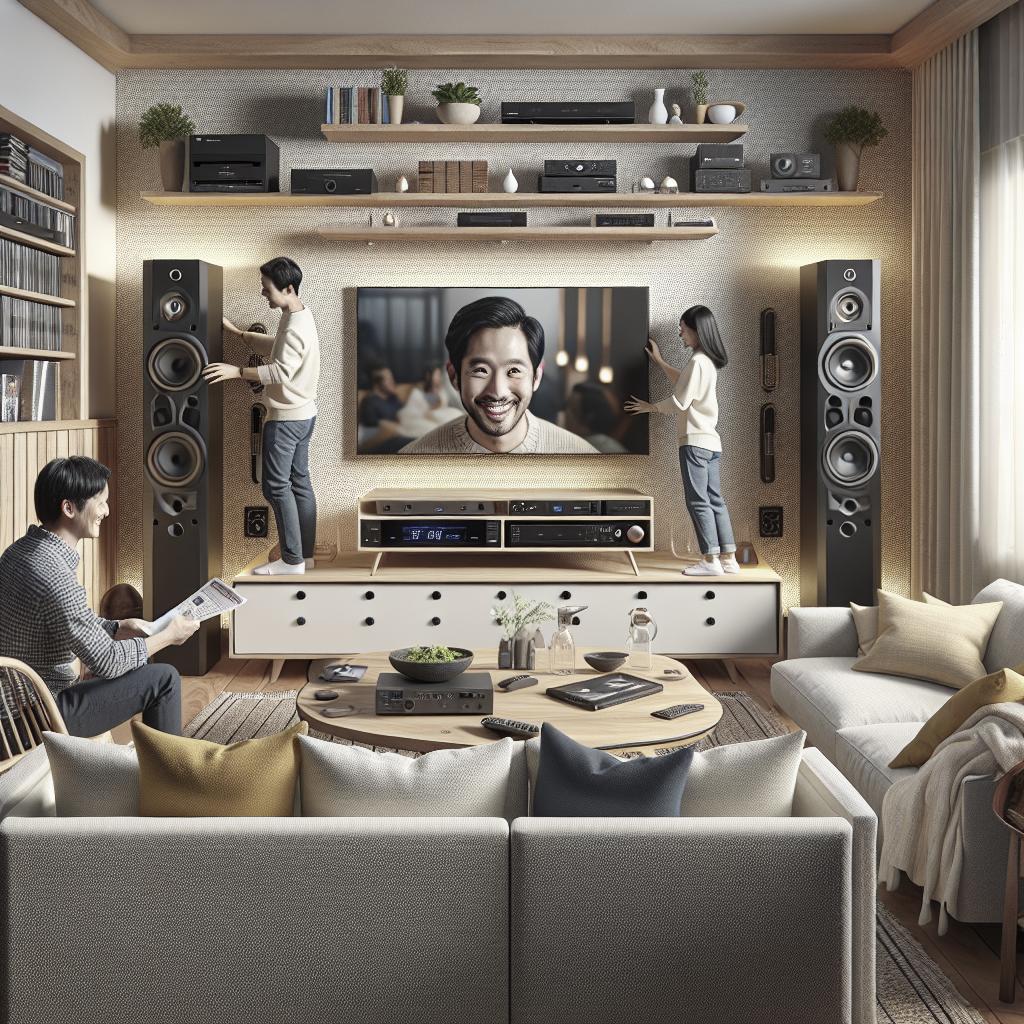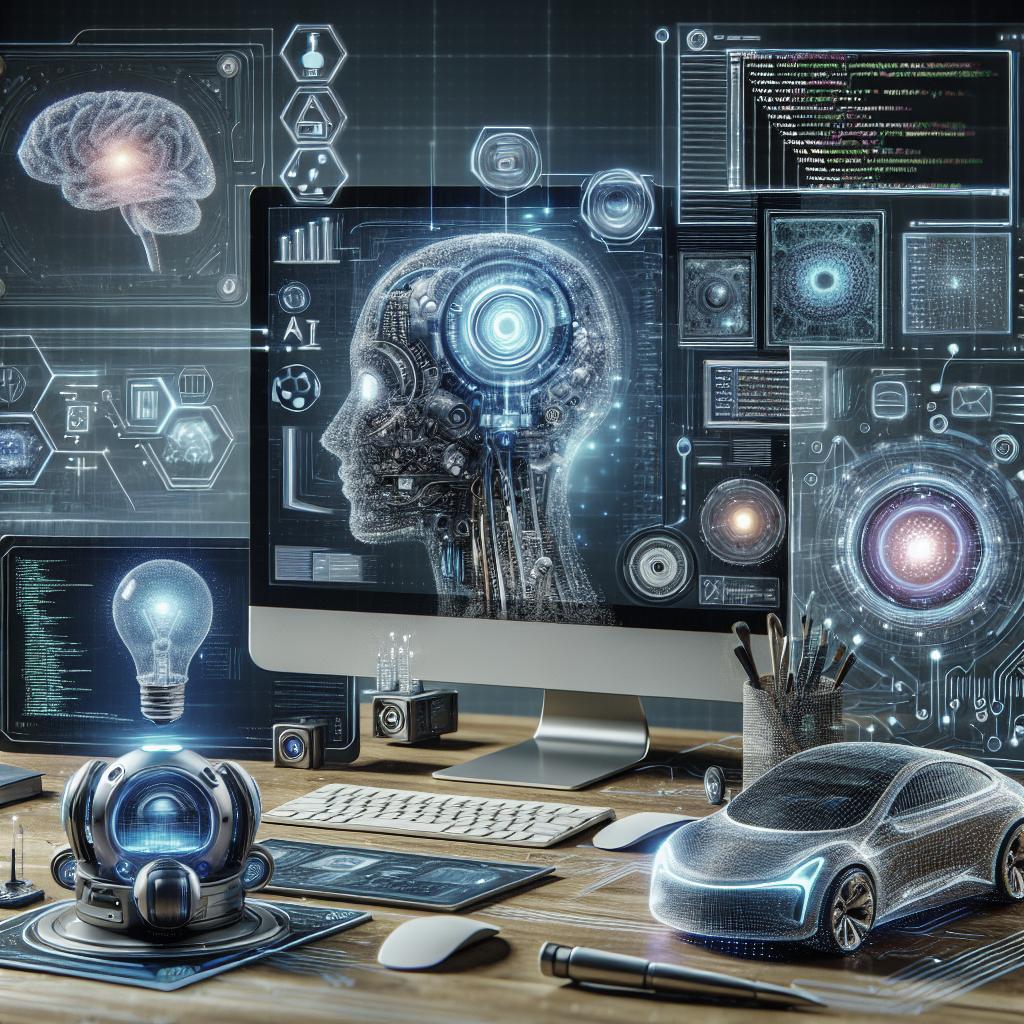“`html
How to Set Up a Home Theater System
Setting up a home theater system can elevate your movie-watching and gaming experiences to a cinematic level within the comfort of your own home. This guide will walk you through the essential components and connections you’ll need, from receivers, speakers, and screens to media streamers. Whether you’re a novice or have some technical know-how, by following this step-by-step approach, you can create a thrilling entertainment atmosphere. Let’s dive into the key elements and explore how you can transform your living room into a personal theater.
What You Need to Set Up a Home Theater System
To set up a comprehensive home theater system, you’ll need a collection of key components that work in harmony to deliver the best audio and visual experience. First and foremost, a television or video projector as your display option is essential, offering a clear and vibrant picture. Further enhancing your setup are the audio components, which typically include a home theater receiver, and a mix of speakers including subwoofers for impressive sound.
Additionally, you’ll want media sources such as a Blu-ray player, DVD player, or a media streamer that connects to various services. Don’t overlook the cables and mounting accessories, crucial for a tidy and functional installment. Assembling these components can initially seem daunting, yet having the right components prepared beforehand facilitates a smooth installation process.
The Home Theater Connection Path
The connection path in a home theater system involves linking together audio-visual components, ensuring seamless communication and operation. At the core of these connections is the home theater receiver, which acts as the central hub receiving signals. It decodes these signals, then distributes them to both their intended display, like a television or projector, and the audio output devices such as speakers.
Cables are integral to this setup, including HDMI cables for high-definition video and audio, as well as speaker wires for delivering sound output. Understanding the route through which signals travel and ensuring each component is adequately connected is crucial to the system’s performance and quality.
Connecting Home Theater Components
Begin your component connections by familiarizing yourself with the input and output terminals on your receiver, as these are pivotal in channeling the signal flow from one device to another. For most modern setups, using HDMI cables can streamline the process due to their ability to handle both audio and video signals. Connect your Blu-ray or media player to available HDMI inputs on your receiver.
Next, ensure your TV or projector receives its feed from the receiver’s HDMI out connection. If any components are not HDMI-compatible, alternative connections like optical or coaxial audio outputs, and composite video inputs may be required. Outlining a plan for these connections can simplify the installation process, reducing the guesswork involved.
The Home Theater Receiver
The home theater receiver, often touted as the brain of a home theater system, manages the routing and processing of video and audio signals. It amplifies audio signals to power the speakers and provides essential connectivity options for all multimedia devices. When selecting a receiver, consider its number of available inputs and outputs, as these define how many devices you can connect simultaneously.
Moreover, advanced features such as Dolby Atmos or DTS:X support should be analyzed for those interested in high-fidelity, immersive sound. Receivers can feature built-in streaming services, video upscaling capabilities, and room correction technology to deliver an optimal acoustic experience tailored to your space.
TV or Video Projector
Your visual display choice, whether a TV or a projector, forms the centerpiece of your home theater system. High-definition flat-panel TVs with LED, OLED, or QLED technology offer bright, vibrant visuals ideal for smaller spaces. For larger rooms, a video projector paired with a projection screen can create a more cinematic sensation, with expansive, theater-like images.
Whichever option you choose, prioritize the device’s resolution capabilities, supporting at least 1080p Full HD or, preferably, 4K UHD for future-proofing. Additionally, consider factors such as brightness, contrast ratio, and screen size compatibility, ensuring the display fits seamlessly into your desired viewing environment.
Blu-ray Disc, DVD, CD, and Record Players
Media playback devices like Blu-ray and DVD players remain essential for those who collect physical media. Blu-ray players, in particular, provide exceptional audio-visual quality, supporting high-resolution formats along with additional features like internet connectivity for streaming services.
Beyond digital media, enthusiasts of physical formats such as CDs and vinyl records can connect compatible players to the receiver. Ensure these devices are securely linked through analog or digital audio connections, facilitating a clear transfer of audio signals to the speakers, reproducing the depth and richness of traditional media.
Media Streamer
Adding a media streamer into your setup invites access to an expansive array of digital content directly from the internet. Devices like Roku, Apple TV, Amazon Fire Stick, or Chromecast deliver streaming services and apps efficiently, transforming any TV into a smart entertainment hub.
Depending on the type of streamer, connection paths may include an available HDMI port on the receiver or direct HDMI input on a TV. A reliable Wi-Fi signal or wired Ethernet connection ensures that high-definition streaming occurs without interruptions or buffering issues.
Notes For VCR and DVD Recorder Owners
Older media equipment such as VCRs and DVD recorders can still find a place within modern home theater ecosystems. These devices can be connected using the receiver’s composite or component inputs when HDMI inputs are unavailable or unsupported.
Ensure your receiver includes legacy inputs if intending to integrate such devices; otherwise, external converters that adapt composite outputs to HDMI or other digital interfaces may be required. Acknowledging these nuances can aid in integrating legacy multimedia with modern technologies efficiently.
Connecting and Placing Your Speakers and Subwoofer
A properly configured speaker system envelops viewers in a rich sound environment. Begin by connecting your speakers to the home theater receiver through speaker wire connections, designated for specific speaker outputs on the receiver’s rear panel.
Placement considerations are crucial; ensure speakers are positioned to optimize sound dispersion across the room, adhering to recommended channel layout instructions for balanced audio. A subwoofer should be placed on the floor, strategically located to reinforce bass frequencies, ideally close to a wall or in a corner.
Speaker Setup Examples
5.1 Channel Speaker Placement
In a 5.1 channel configuration, position five speakers and a subwoofer strategically for immersive audio. The center channel speaker, responsible for dialogue clarity, should be placed directly above or below the screen. Front left and right speakers point towards the central seating position, flanking the screen.
Surround speakers are placed slightly behind the listening area, angled towards the sides to produce dynamic effects. The subwoofer completes the setup by adding deep bass impact, enhancing the overall listening experience.
7.1 Channel Speaker Placement
A 7.1 channel system builds upon the 5.1 arrangement, adding two additional surround back speakers behind the audience, further expanding the sound field for even greater depth and involvement. Front and center speaker placements remain unchanged, maintaining focus and clarity from the screen.
The positioning of these additional rear speakers ensures sounds circulate the listening area, creating an enveloping 360-degree audio experience that mimics actual cinema soundscapes, enhancing movie soundtracks and effects immensely.
Home Theater Setup Tips
To ensure a successful home theater setup, begin by planning the layout meticulously, measuring dimensions and allocating space for equipment and seating. Utilizing room calibration tools included with receivers can optimize sound settings for your specific environment.
Keeping cables organized and labeled assists in troubleshooting and aesthetic presentation. Regularly updating device firmware ensures compatibility and access to the latest features. Engage with online forums and resources to explore tips and troubleshoot common issues, capitalizing on shared experiences.
| Component | Description |
|---|---|
| Home Theater Receiver | Central hub for audio and video signal management. |
| TV or Video Projector | Visual display device, displays the media content. |
| Speakers & Subwoofer | Audio output, delivers immersive sound experience. |
| Blu-ray/DVD Player | Media sources for playing physical disks. |
| Media Streamer | Allows digital streaming services on your system. |
| Cables | Connects all components together for signal transfer. |
“`


